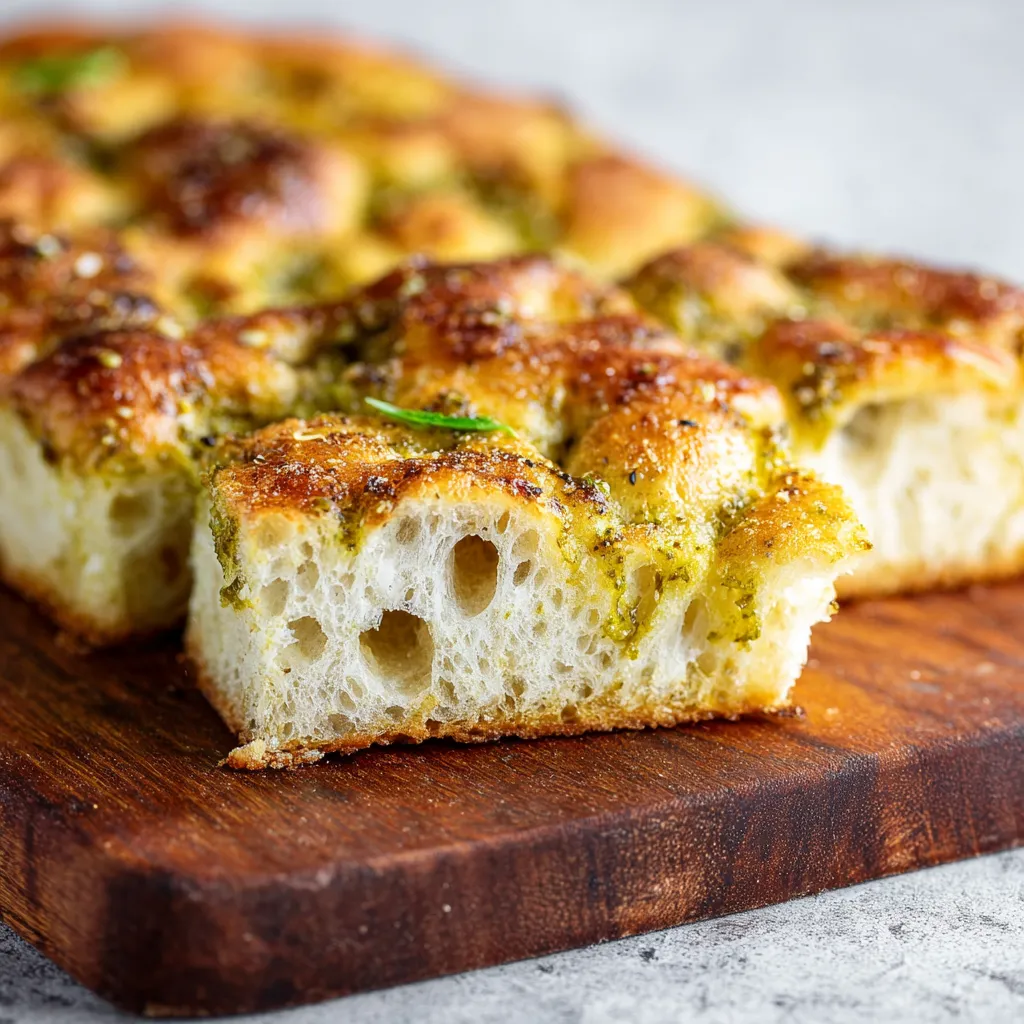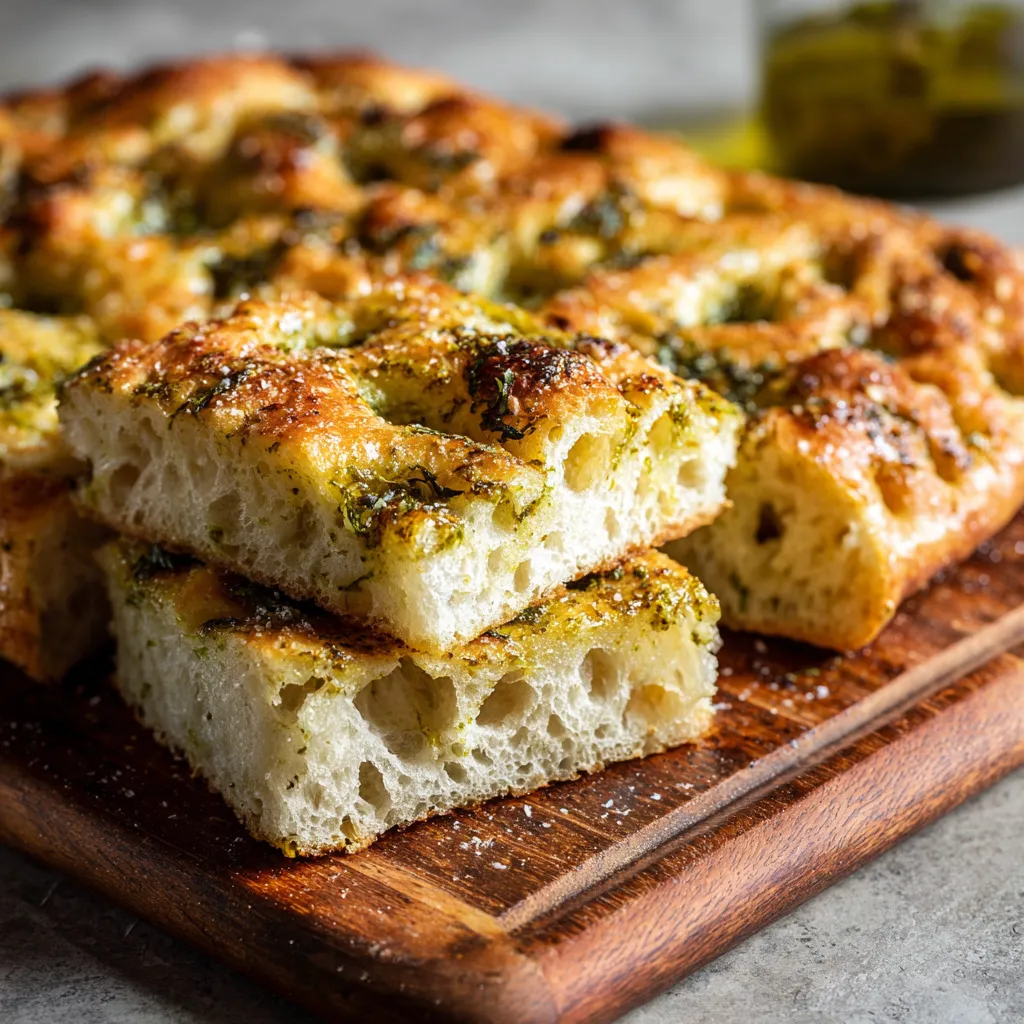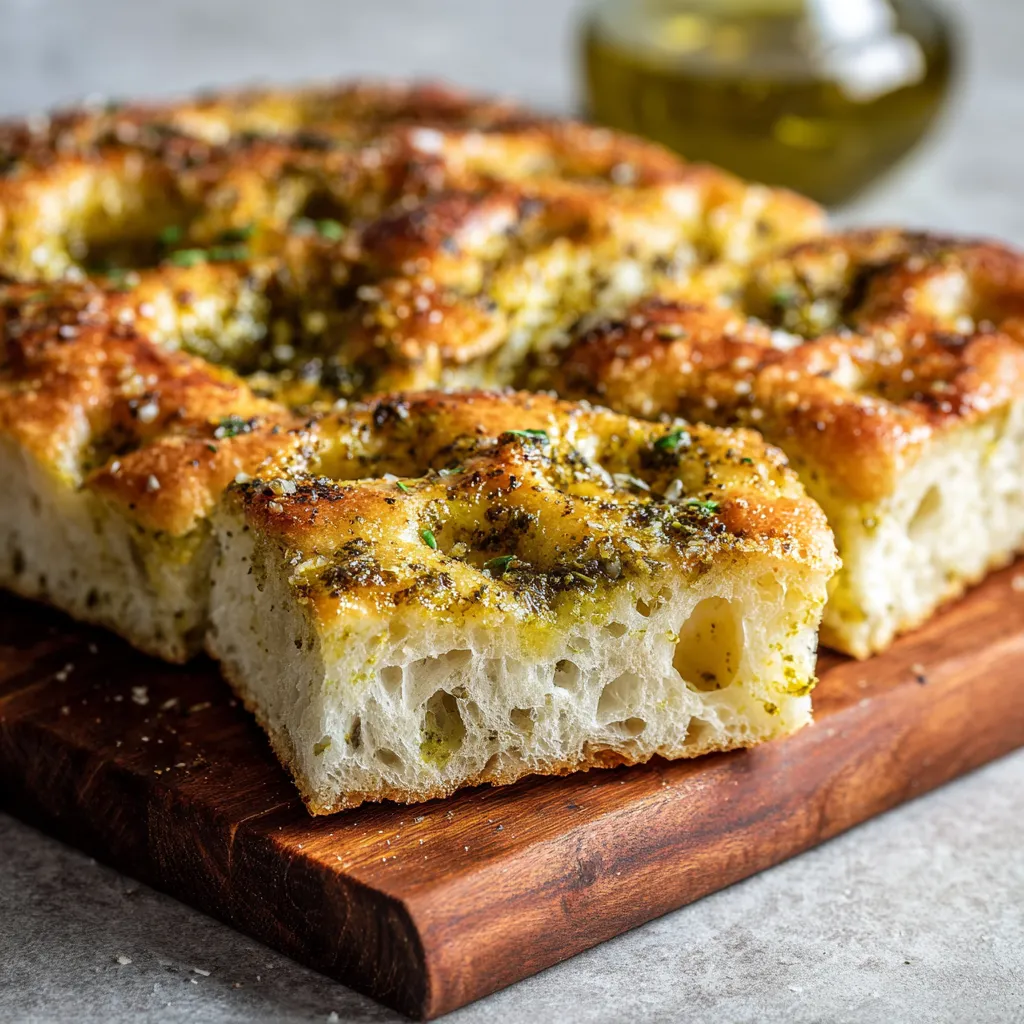 Pin it
Pin it
Basil pesto focaccia bread brings bakery-level flavor to your kitchen with minimal effort. This airy, olive oil-kissed bread is dimpled to trap luscious pockets of basil pesto, making every bite irresistible whether served warm as a side or cooled for sandwiches. I keep coming back to this recipe on lazy weekends for its big payoff and welcoming aroma that fills the whole house.
The first time I made this, the kitchen smelled like an Italian bakery and my friends gathered round before it even left the pan. Now it is my go-to for picnics and potlucks because everyone asks for more.
Ingredients
- Lukewarm water: For activating yeast and creating a moist airy dough. Use filtered water for best taste.
- Instant or active dried yeast: For reliable rising. Be sure the yeast is fresh and not expired.
- All-purpose or bread flour: With a protein level of at least 11 percent for the perfect chewy structure. Look for unbleached flour for better flavor.
- Fine salt: To enhance flavor in both dough and crust.
- Extra virgin olive oil: For rich taste and a golden crust. Choose a high-quality, fruity oil.
- Basil pesto: To infuse herby punch throughout. Use homemade or quality-store bought with visible green flecks.
- Flaky salt: To give a delicious finishing crunch. Try to find large crystal sea salt for added texture.
Step-by-Step Instructions
- Mix the Dough:
- Combine the yeast, lukewarm water, flour, and salt in a large bowl using a wooden spoon or silicone spatula until you have a wet and shaggy dough. If using active dried yeast, dissolve it in the water first and let stand for about five minutes. This step ensures the yeast is active and ready to leaven the dough.
- Rest and Stretch the Dough:
- Let the dough rest for 15 minutes, uncovered. Then with wet hands, perform a series of stretch and folds every 15 minutes for one hour, resulting in four sets total. To stretch and fold, gently lift one edge of the dough, stretch it upwards, and fold it over the center. Rotate the bowl and repeat until each side has been folded. This creates gluten structure so your focaccia will rise high without kneading.
- Oil and Pan the Dough:
- Drizzle a generous amount of olive oil over the base of a nine by thirteen inch pan. Transfer the dough to the pan and rest it for five to ten minutes. Using oiled fingers, coax and pat the dough to fill the pan. If the dough springs back, simply rest it again and retry after a few minutes. This prevents tearing and keeps the crumb even.
- Rise the Dough:
- Let the dough rise at room temperature until just doubled and jiggly when you nudge the pan, usually about one to one and a half hours. Warmer kitchens will proof faster than cooler ones. Do not overproof or the dough may collapse during baking.
- Top and Dimple:
- Spoon dollops of basil pesto across the dough and drizzle olive oil on your hands. Use your fingers to gently spread the pesto, then press deep dimples all over the surface so the oil and pesto can settle into every pocket. Finish with a sprinkle of flaky salt.
- Bake:
- Bake in a preheated 450 degrees Fahrenheit (230 degrees Celsius) oven for at least twenty five minutes or until the bread is deeply golden and pulls from the edge. If the pesto starts browning too fast, loosely cover with foil. This keeps the top vibrant without burning.
- Cool and Serve:
- Remove from the oven, let the bread sit three to four minutes, then lift out onto a wire rack to cool and crisp the crust. Cut into squares while still barely warm for the best taste and texture.
 Pin it
Pin it
Homemade focaccia was my project for Sunday brunches and there is magic in pressing dimples into springy dough. Basil pesto is my favorite for its aromas and bright green color which always impresses guests and lingers in the kitchen long after baking.
Storage Tips
Store any leftover focaccia wrapped in a clean kitchen towel or parchment inside a bread bag to keep the crust from drying. It keeps well at room temperature for two to three days. For longer storage, freeze individual pieces in a zip bag for up to one month. Refresh under the oven broiler or toaster before eating.
Ingredient Substitutions
You can swap all-purpose for bread flour for extra chew or vice versa for a slightly softer bite. If basil pesto is not available, use any green pesto such as arugula or sun-dried tomato pesto for a twist. Dairy-free pesto makes this fully vegan without sacrificing flavor.
Serving Suggestions
This bread is a fantastic side to pasta dishes, soups, or salads. Slice into squares and fill with mozzarella or tomato for mini sandwiches. Try with roasted vegetables for a lunch that tastes like summer. Leftovers reheat beautifully and are great for soaking up brothy soups or shaved into croutons.
Cultural and Historical Context
Focaccia traces back to Ancient Rome but became famous across Italy as a bakery staple. It is especially beloved along the Liguria coastline where pesto originated. The pairing of basil pesto and focaccia brings together centuries of Italian heritage with a modern twist, no oven or wood fire required.
 Pin it
Pin it
The step that makes this bread shine is taking your time with the stretch and fold method. Not only does it build strength in the dough but it is relaxing and therapeutic after a busy week. Your patience is rewarded with the best focaccia you will ever taste at home.
Frequently Asked Questions
- → What type of flour works best?
Bread flour or all-purpose flour with at least 11% protein yields a chewy crumb and good structure.
- → Can I use store-bought pesto?
Yes, store-bought basil pesto can be used for convenience, or try homemade for a fresher flavor.
- → How do I know when the dough has risen enough?
The dough should just double in size, jiggle slightly when shaken, and avoid over-proofing for best texture.
- → What other toppings go well?
Try sun-dried tomatoes, roasted garlic, or a sprinkle of Parmesan for added depth and variety.
- → How should I store leftovers?
Wrap cooled focaccia in foil or store in an airtight container at room temperature for up to two days.
- → Can I freeze focaccia?
Yes, slice and wrap pieces well before freezing. Reheat in a low oven for best results.
